Title : Beyond the clinical eye: POCUS as the critical differentiator in emergency skin and soft tissue infection management
Abstract:
Introduction: Point-of-care ultrasound (POCUS) is increasingly recognized as an invaluable diagnostic tool in emergency medicine. This case series demonstrates the utility of POCUS in evaluating soft tissue and musculoskeletal infections, highlighting its superiority over clinical examination alone and its role in expediting appropriate management.
Methods: We present three cases where POCUS was employed in the emergency department (ED) to evaluate suspected soft tissue and musculoskeletal infections. Each case demonstrates a distinct clinical scenario where POCUS provided crucial diagnostic information that influenced management decisions.
Results:
Case 1: A man in his 40s with learning difficulties presented with cellulitis unresponsive to outpatient antibiotics. Clinical examination was limited due to communication barriers, and findings were equivocal for an underlying collection. POCUS revealed a deep abscess not apparent on clinical examination, prompting surgical referral for incision and drainage. This facilitated timely source control that would have been delayed if relying on clinical assessment alone.
Case 2: An 80-year-old male presented with erythema and atraumatic swelling over the dorsum of his foot, unresponsive to antibiotics. The patient was referred to the ED for possible septic arthritis or abscess drainage. POCUS demonstrated a bony growth without cobblestone changes characteristic of cellulitis and ruled out abscess or joint effusion. Comparative imaging of the contralateral foot showed nil similar changes, and subsequent radiography confirmed midfoot osteoarthritis with prominent osteophytes. POCUS prevented an unnecessary invasive procedure and inappropriate surgical referral. The associated erythema was likely secondary to friction from footwear.
Case 3: A 65-year-old female with diabetes presented with rapidly progressing erythema and swelling of the left thigh, with pyrexia and hypotension. Necrotizing fasciitis (NF) was suspected based on clinical features. Bedside POCUS in the resuscitation bay demonstrated subcutaneous thickening, deep fascial fluid accumulation, and gas locules within tissue planes—findings consistent with NF. This prompted immediate broad spectrum antibiotic administration and expedited surgical intervention. CT done enroute to operation theatre confirmed the diagnosis.
Discussion: These cases demonstrate how POCUS provides critical diagnostic information beyond that obtainable through clinical examination alone. In Case 1, POCUS identified a deep collection in a patient with limited examination capabilities. In Case 2, POCUS distinguished between infectious and non-infectious pathology, preventing iatrogenic harm. In Case 3, POCUS confirmed the suspected diagnosis of necrotizing fasciitis, facilitating rapid surgical intervention.
Conclusion: POCUS should be considered an essential component in the diagnostic armamentarium of emergency physicians evaluating soft tissue and musculoskeletal infections. It offers the advantages of being rapid, non-invasive, and repeatable, while providing real-time information that can distinguish between conditions requiring conservative management, procedural intervention, or emergency surgery. Integration of POCUS into routine assessment of suspected soft tissue infections may improve diagnostic accuracy, reduce unnecessary procedures, and expedite life-saving interventions.



